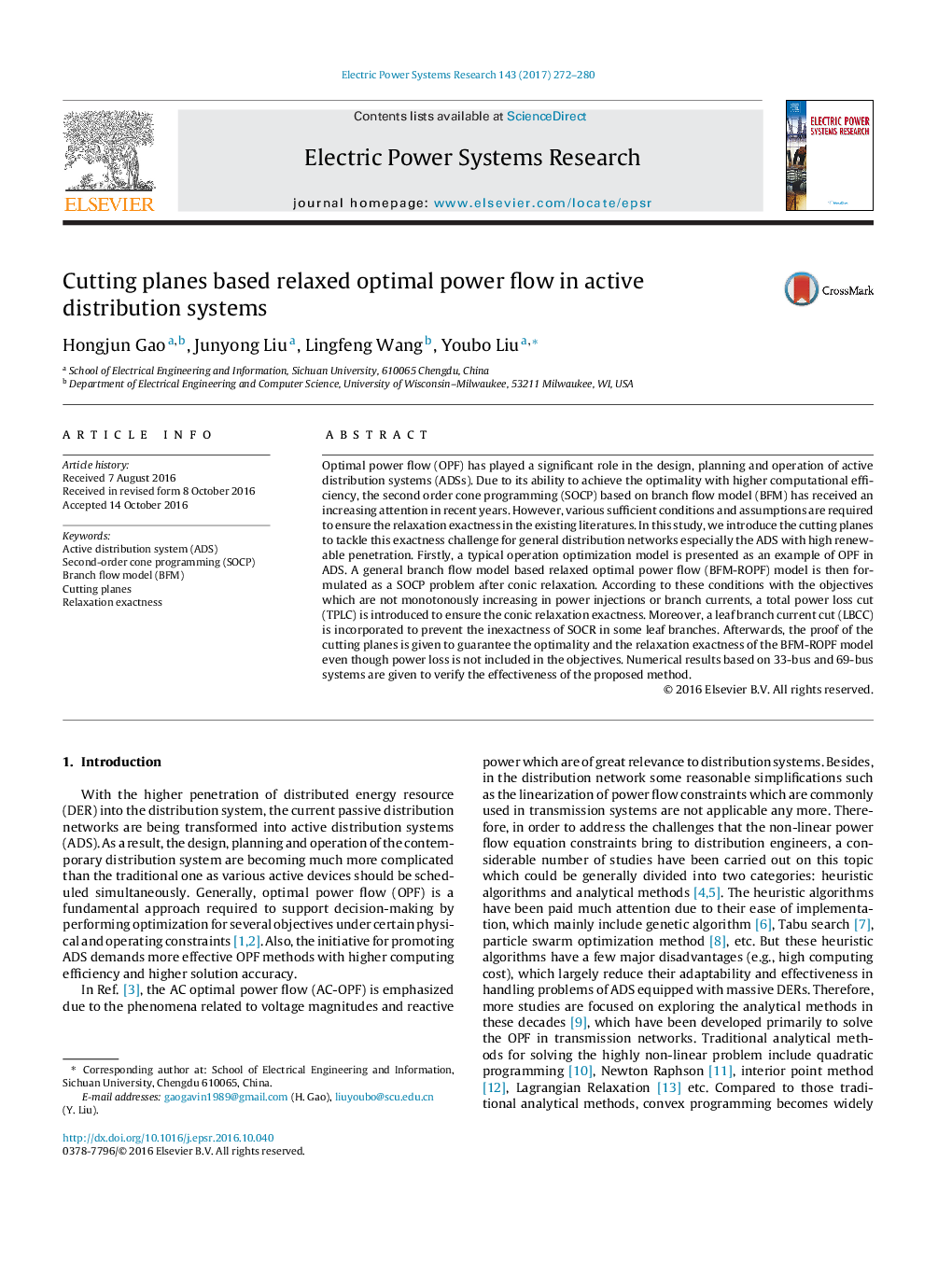| Article ID | Journal | Published Year | Pages | File Type |
|---|---|---|---|---|
| 5001232 | Electric Power Systems Research | 2017 | 9 Pages |
Abstract
Optimal power flow (OPF) has played a significant role in the design, planning and operation of active distribution systems (ADSs). Due to its ability to achieve the optimality with higher computational efficiency, the second order cone programming (SOCP) based on branch flow model (BFM) has received an increasing attention in recent years. However, various sufficient conditions and assumptions are required to ensure the relaxation exactness in the existing literatures. In this study, we introduce the cutting planes to tackle this exactness challenge for general distribution networks especially the ADS with high renewable penetration. Firstly, a typical operation optimization model is presented as an example of OPF in ADS. A general branch flow model based relaxed optimal power flow (BFM-ROPF) model is then formulated as a SOCP problem after conic relaxation. According to these conditions with the objectives which are not monotonously increasing in power injections or branch currents, a total power loss cut (TPLC) is introduced to ensure the conic relaxation exactness. Moreover, a leaf branch current cut (LBCC) is incorporated to prevent the inexactness of SOCR in some leaf branches. Afterwards, the proof of the cutting planes is given to guarantee the optimality and the relaxation exactness of the BFM-ROPF model even though power loss is not included in the objectives. Numerical results based on 33-bus and 69-bus systems are given to verify the effectiveness of the proposed method.
Related Topics
Physical Sciences and Engineering
Energy
Energy Engineering and Power Technology
Authors
Hongjun Gao, Junyong Liu, Lingfeng Wang, Youbo Liu,
